Turkmenistan Travel Guide
This country have a dozens of unique places everyone may like to discover: White City - Ashgabat, the Door To Hell - Burning Gas Crater, The Heaven Horses - Akhal Teke.
The most mysterious country among the ‘Stans in fact is a great destination to explore. Only the lack of knowledge about this region is the "biggest mystery", but if you decided to come here you definitely will discover only-Turkmenistan-have unique spots, goods and traditions.
The country is home to the world’s largest carpet and indoor ferris wheel. There are also breathtaking sights, like Nissa, Kunya Urgench and Merw, a desert city stacked by Genghis Khan, the sandy Kopet Dag mountains on the border with Iran, the Underground Lake and picturesque Yangikala Canyon.
And, in case if you are foodie, don't forget to try a Caspian Black Caviar here.
Fast navigation
Destination Highlights
Ashgabat
Ashgabat, or ‘the city of love’ in Arabic, has reinvented itself as a showcase city for the newly independent republic and is definitely one of Central Asia’s unique places. Built almost entirely off the receipts of Turkmenistan’s oil and gas revenues, the city’s transformation continues at breakneck speed, with whole neighbourhoods facing the wrecking ball in the name of progress, and gleaming white marble monoliths springing up overnight.
After the big earthquake in 1948, Ashgabat was rebuilt in the Soviet style, but its modern incarnation became a futuristic White City, the Ashgabad downtown and country well known landmark.
National Museum
Looking like a lost palace in the urban desert, the National Museum occupies a striking position in front of the Kopet Dag. It’s actually a collection of three pricey museums – the History Museum, the Nature & Ethnographic Museum and the Presidential Museum. The museum contains a large collection of ancient artifacts. However many are overly intricate, in pristine condition, and many thousand years old leading to questions about their authenticity.
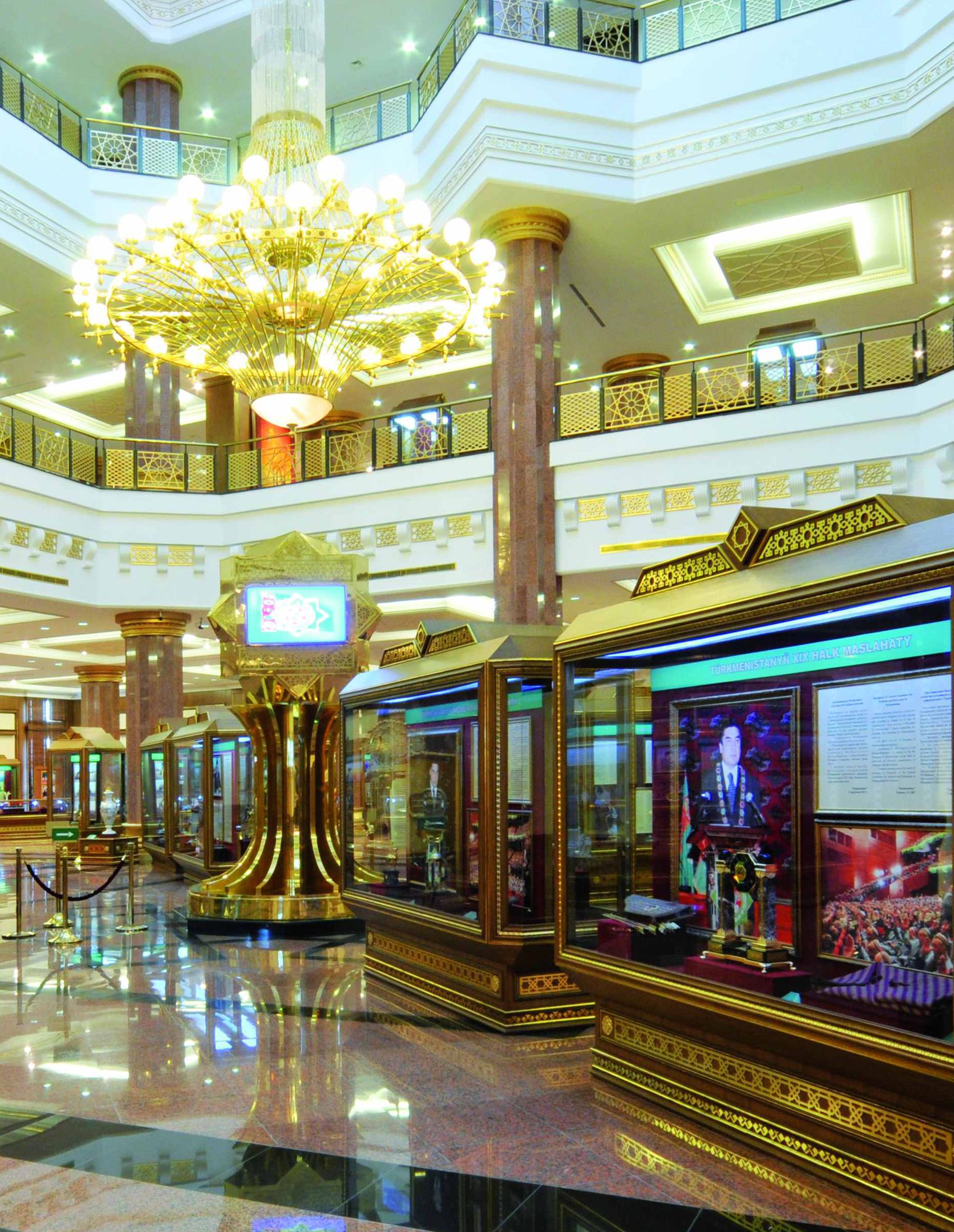
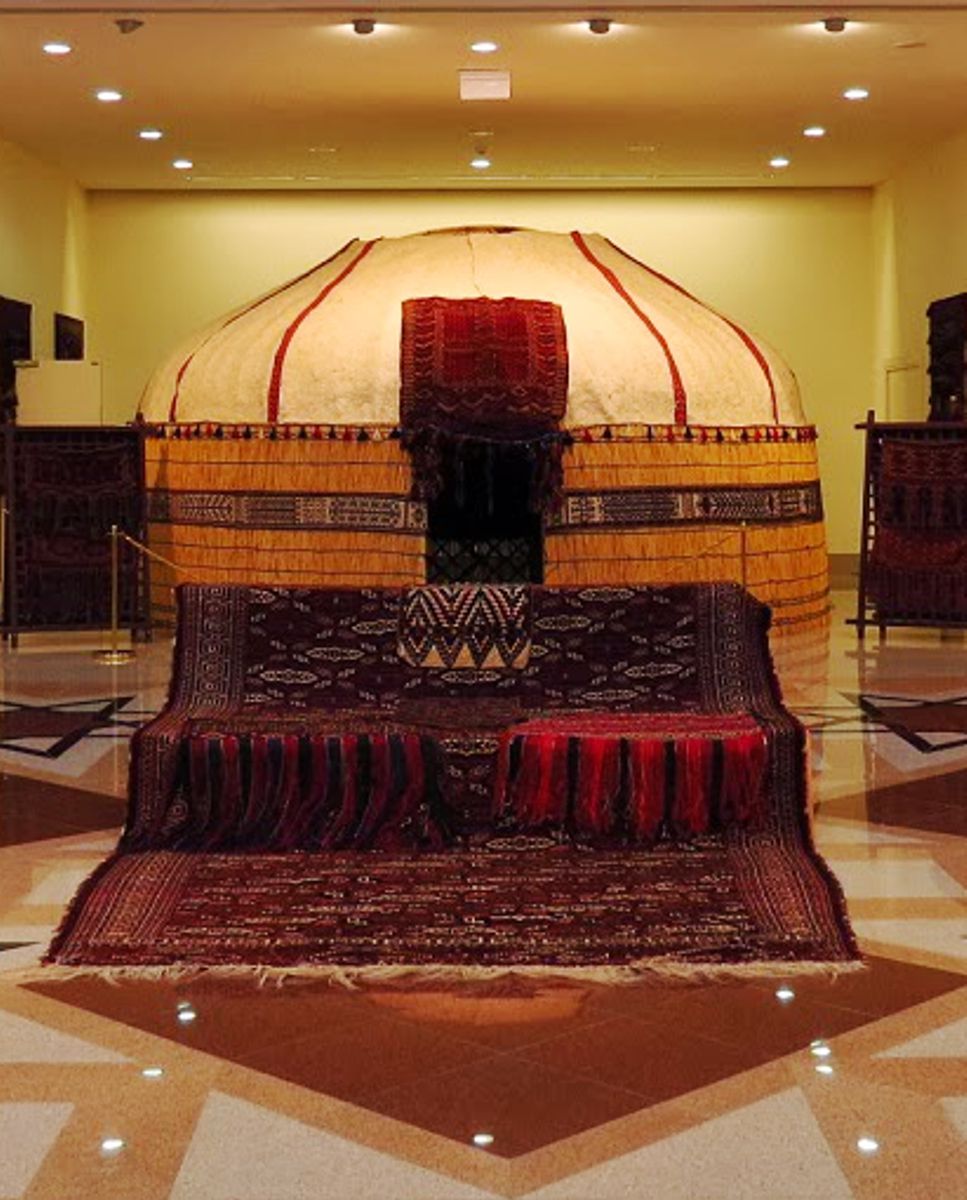
Carpet Museum
This museum has a rich collection of Turkmen carpets from the medieval through to the 20th century, including over 1000 carpets from the 18th and 19th centuries. Aside from its extensive collection of antique carpets, it has many carpet articles, chuvals, khurjuns, torba etc. The world’s largest handwoven rug, really is something to see.
Arch of Neutrality
Once the centerpiece of Niyazov’s Ashgabat, the Arch of Neutrality was erected to celebrate the Turkmen people’s unsurprisingly unanimous endorsement of Turkmenbashi’s policy of neutrality in 1998. Above the arch itself is the real gem, a 12m-high polished-gold statue of Niyazov, which revolved to follow the sun throughout the day.
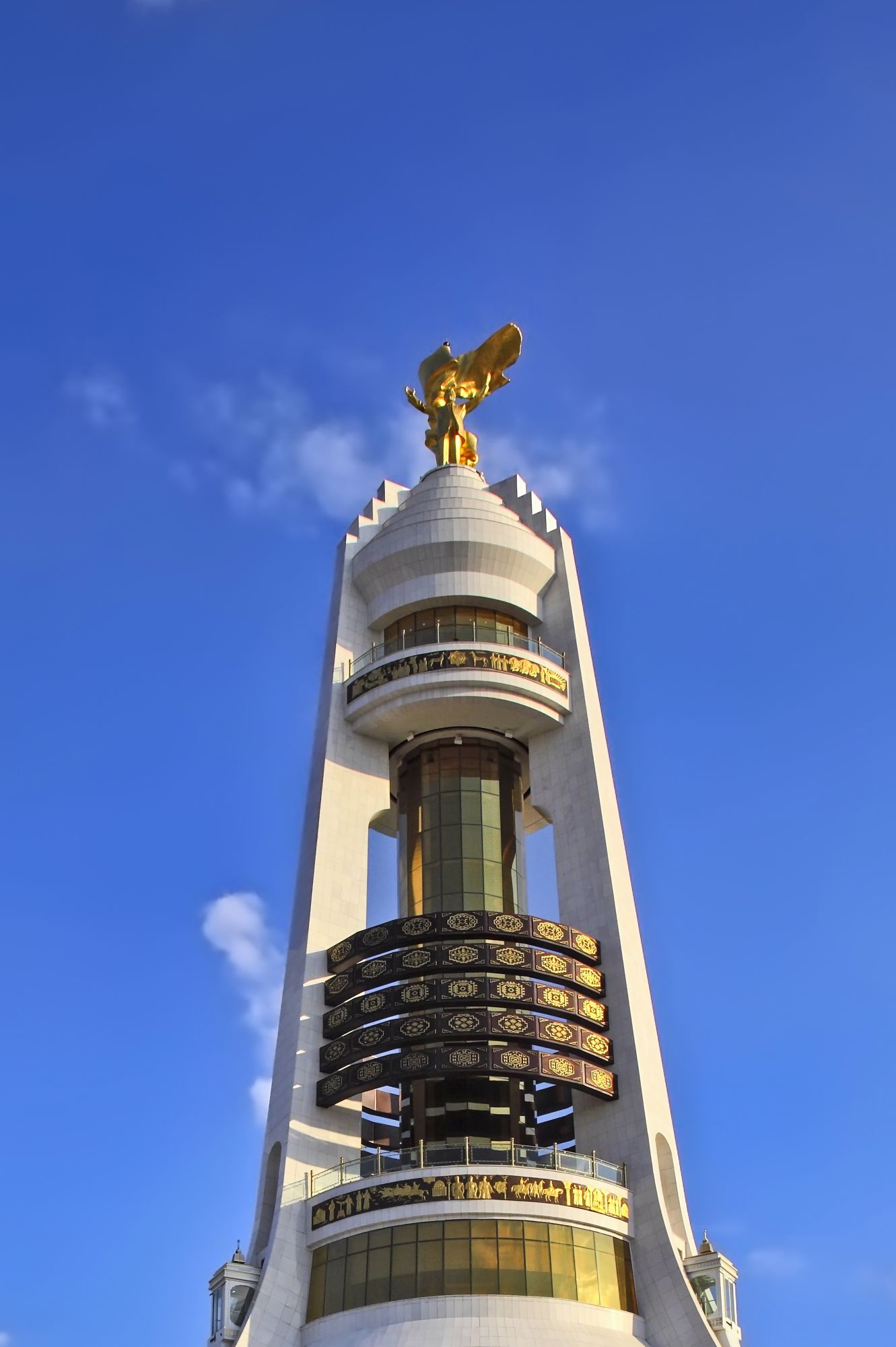
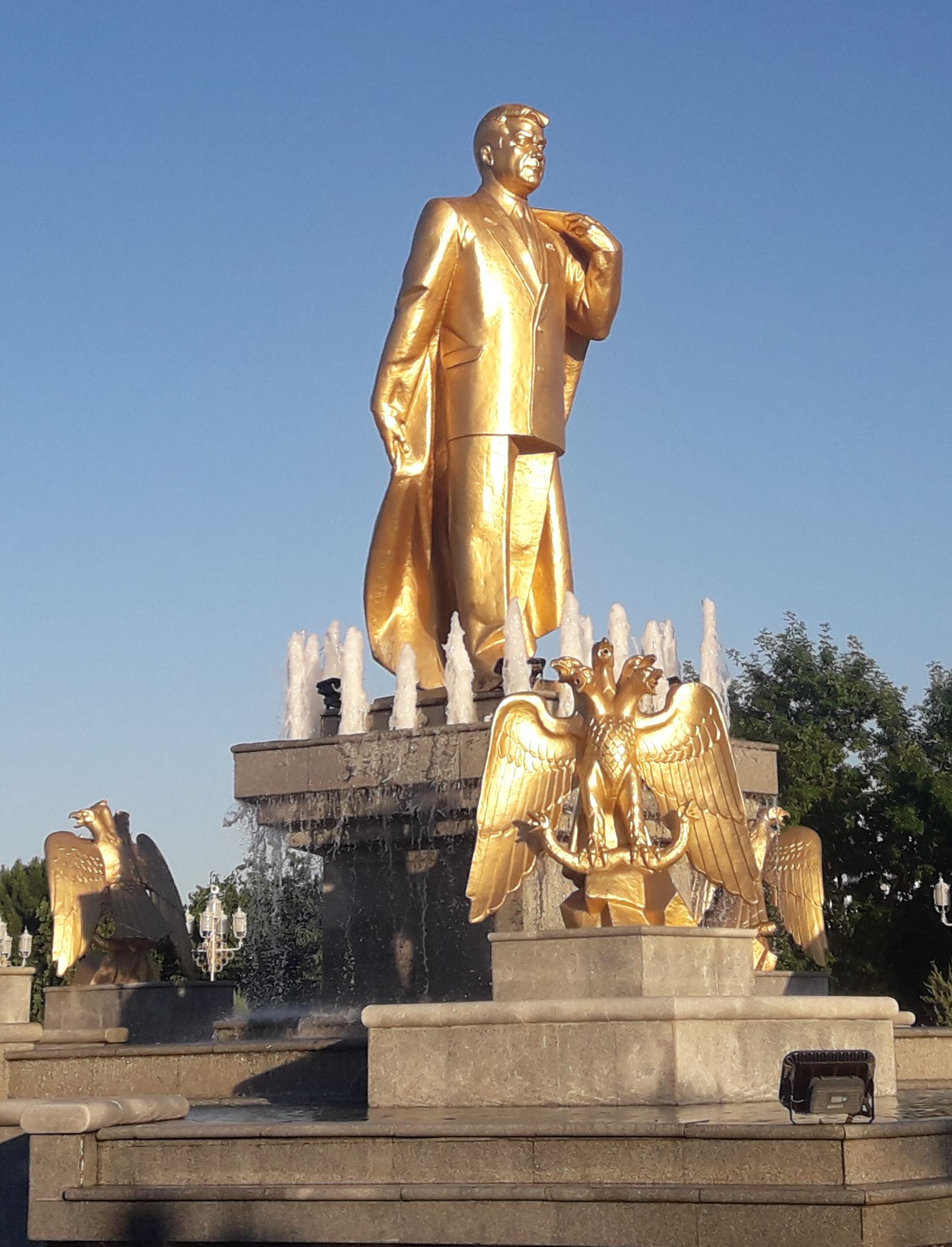
Independence Park
The central object of the pak is Independence Monument, the design of this building was inspired by traditional Turkmen tents and the traditional headgear worn by Turkmen girls. The Monument surrounded by green landscaping that encompasses a cascaded pool and 27 heroic statues of Turkmen leaders, centered on a golden statue of Saparmurat Niyazov.
Ancient Parthian
Settlement of Old Nisa
Nisa or Parthaunisa was an ancient settlement of the Iranian peoples, located near Bagir village, 18 km southwest of Ashgabat. Nisa is described by some as the first seat of central government of the Parthians. It is traditionally assumed to have been founded by Arsaces I (reigned c. 250 BC–211 BC) and was reputedly the royal residence of the Parthian kings, although it has not been established that the fortress at Nisa was either a royal residence or a mausoleum. In 2007, the fortress was declared a World Heritage Site by UNESCO.
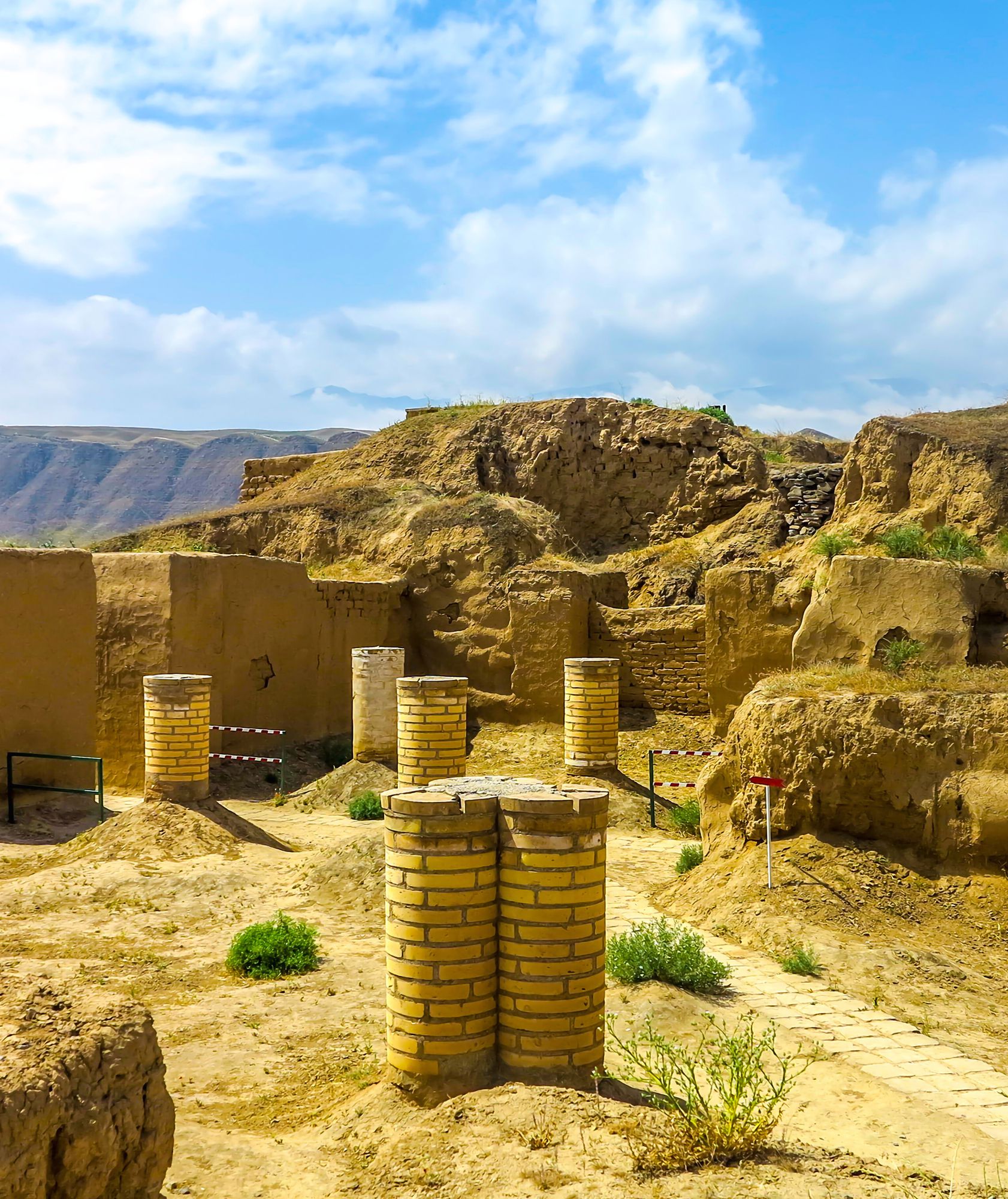
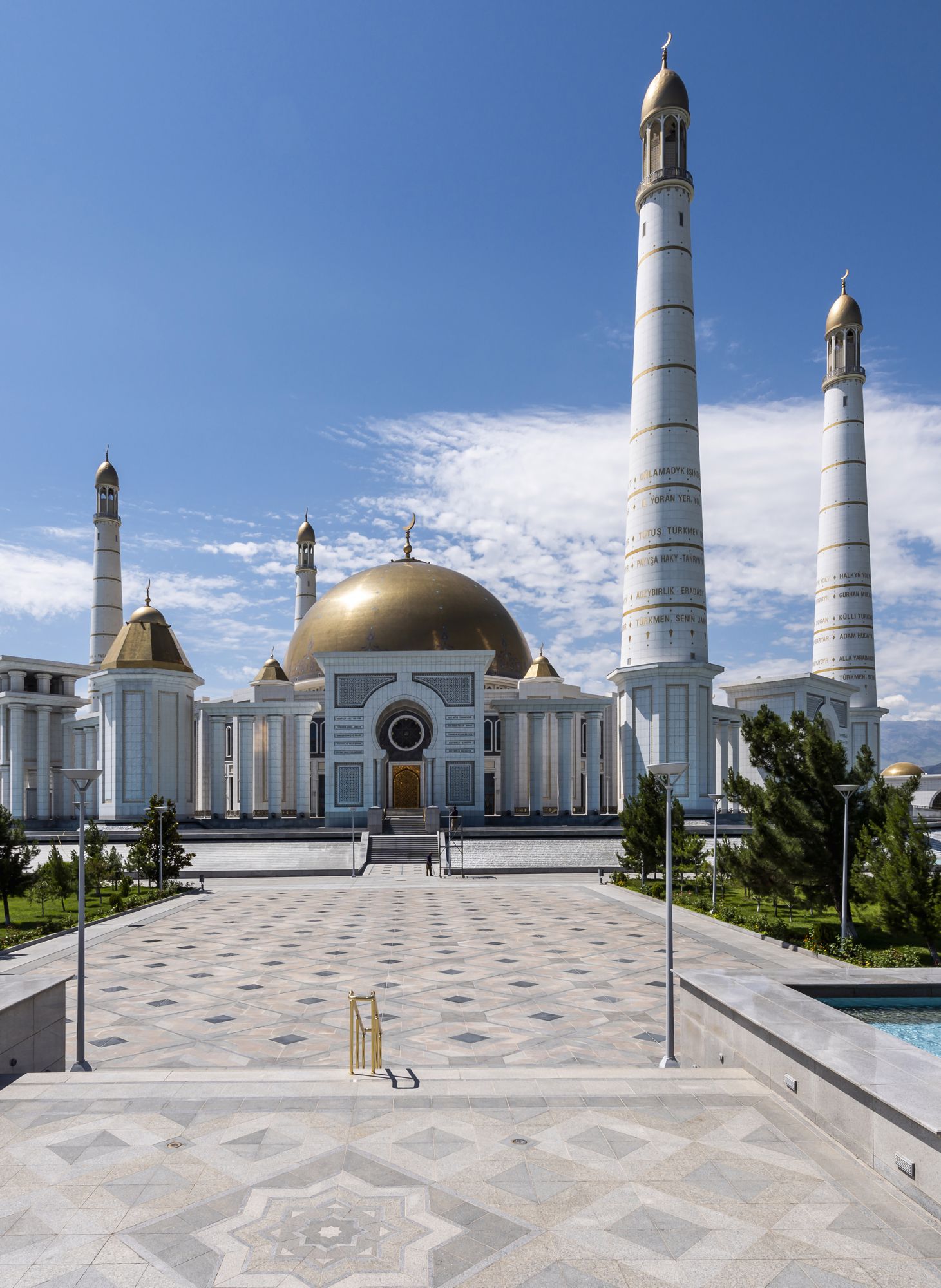
Gypjak Mosque
Turkmenbashi Ruhy Mosque or Gypjak Mosque is a mosque in the village of Gypjak, Turkmenistan. It is located about 7 kilometres west of the Ashgabat. The mosque was built in the home town of President Saparmurat Niyazov. It opened on October 22, 2004 and was built by Niyazov with a mausoleum in preparation for his death.
Underground
Lake Kow Ata
Most people from the capital region prefer the country’s second best swimming spot after Caspian Sea, which is located more than 200 feet underground - The Kow Ata Underground Lake. A long metal staircase leads down into the Bakharden Cave, where the 235-foot-long lake is located. The warm waters contain a high amount of different salts and minerals, most notably sulfur, which is responsible for the distinct smell within the cave. Thus, Kow Ata Underground Lake is also the closest thing Turkmenistan has to a thermal spa. Aside from being a swimming spot and a thermal spa, the cave is also a natural monument, established to protect the largest known colony of bats in the whole of Central Asia.
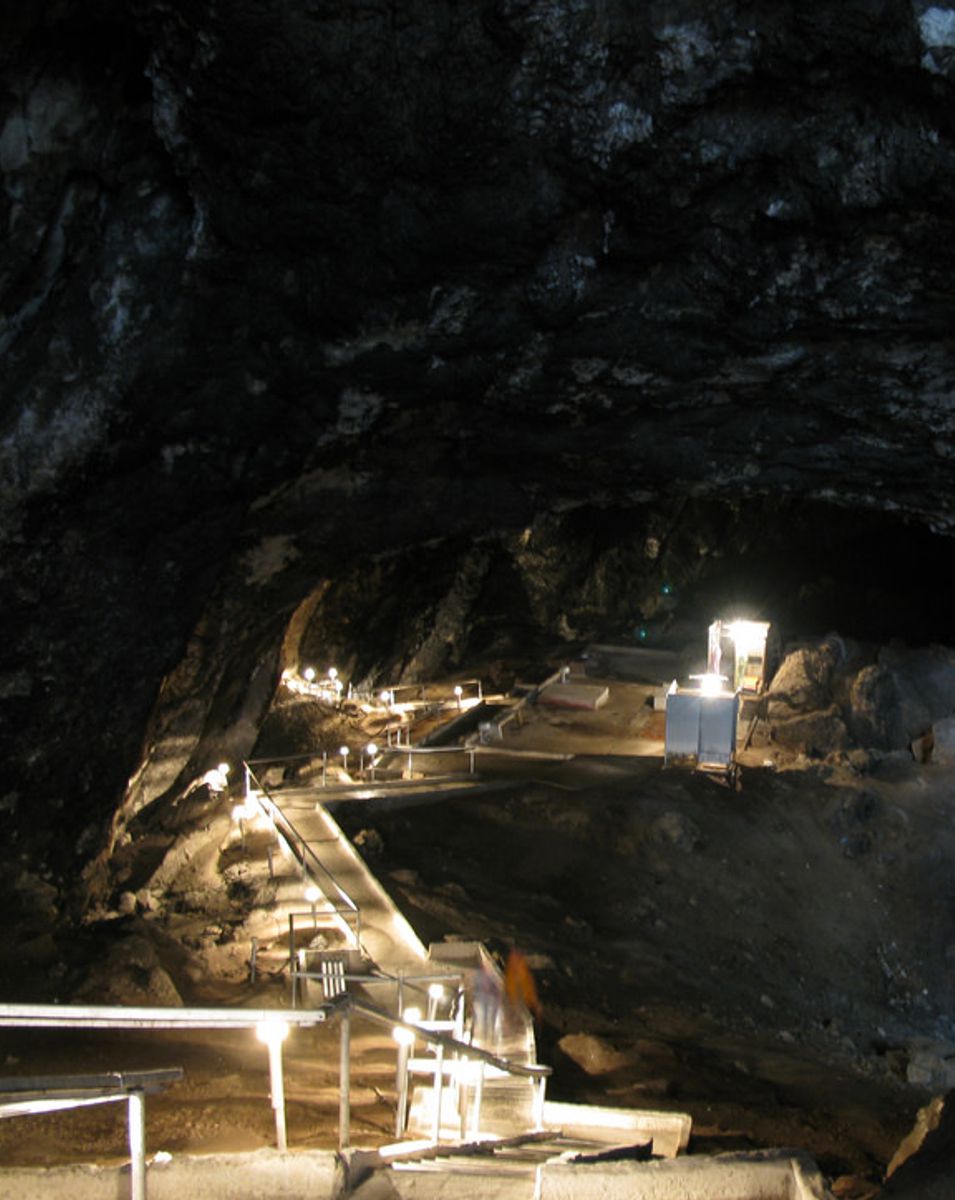
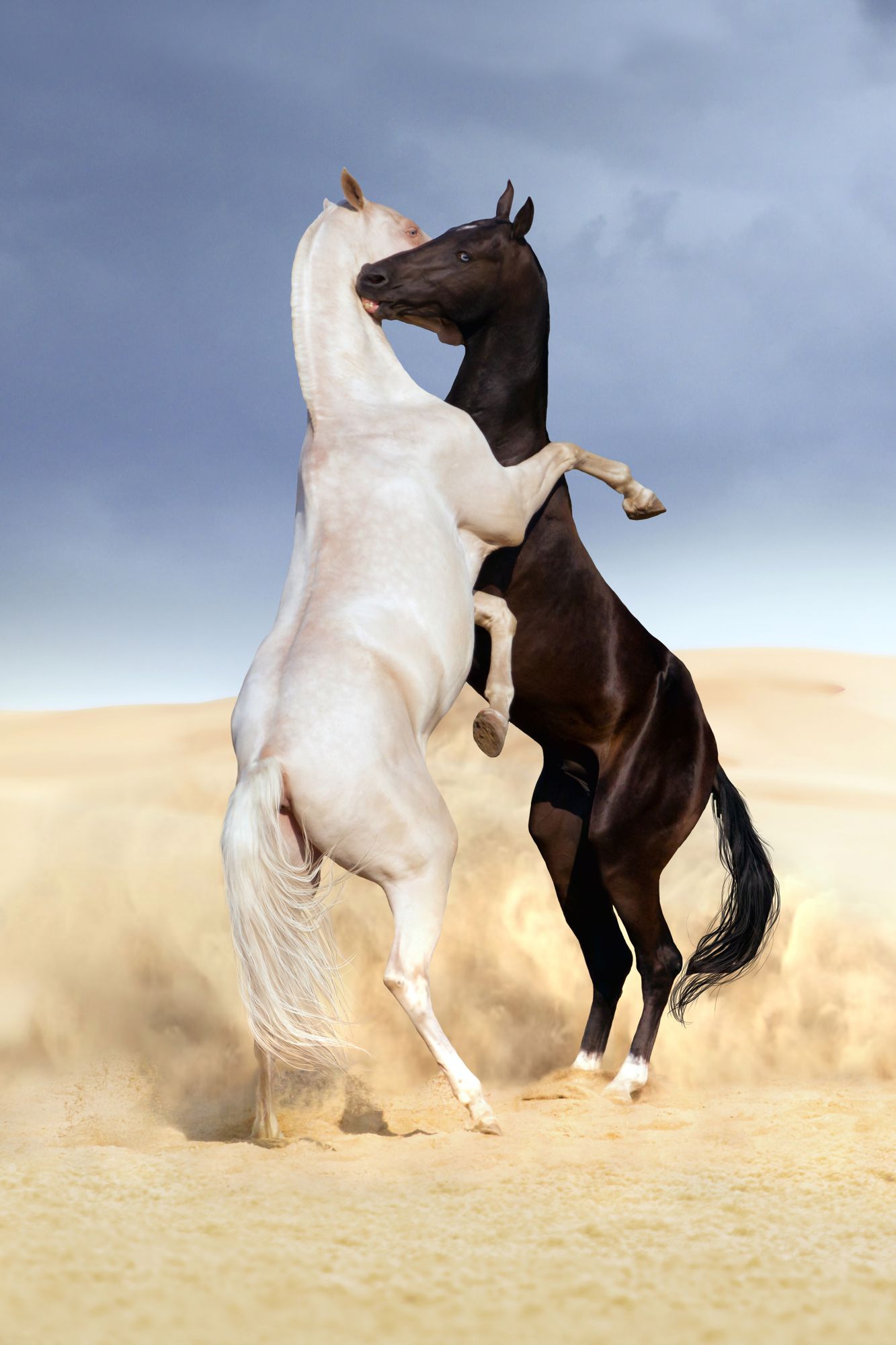
Akhal Teke
& Horse races
Ashgabat is a great place for horse-lovers. Every Sunday from the end of March until May, then again from the end of August until mid-November, the Hippodrome plays host to dramatic Turkmen horse races. It has stables for 600 horses. Among the shining stars of races, here you could meet famous Turkmenistan horse breed - Akhal Teke. This breed have a reputation for speed and endurance, intelligence, and a distinctive metallic sheen.
Kunya Urgench
Kunya-Urgench is located in the territory of Dashoguz velayat of Turkmenistan. It is situated in the north-western Turkmenistan, on the left bank of the Amu-Daria River. Urgench was the capital of the Khorezm region, which was part of the Achaemenid Empire.
The old town area contains series of monuments mainly from the 11th to 16th centuries. This area has remained a vast deserted land with some remains of ancient fortified settlements, including a mosque, the gates of a caravanserai, fortresses, mausoleums and a 60-m high minaret.
Kunya-Urgench is considered to have retained its integrity better than most other sites in Central Asia as the attributes of the property are still present.
Turabeg Khanym
Complex
Turabeg Khanym Complex is still the subject of some debate. Locals and some scholars consider this a mausoleum, though no one is too sure who is buried here. Some archaeologists contend that it was a throne room built in the 12th century. Whatever its function, this is one of Central Asia’s most perfect buildings. Its geometric patterns are in effect a giant calendar signifying humanity’s insignificance in the march of time.


Gutlug Timur Minaret
Across the road from the Turabeg Khanym Complex, a path through a modern cemetery and the 19th-century Sayid Ahmed Mausoleum leads to this minaret, built in the 1320s. It’s the only surviving part of Old Urgench’s main mosque. Decorated with bands of brick and a few turquoise tiles, its 59m-tall minaret is not as tall as it once was, and leans noticeably.
Darwaza
One of Turkmenistan’s most unusual sights, the Darwaza Gas Craters are the result of Soviet-era gas exploration in the 1970s. The three craters are artificial. One has been set alight and blazes with an incredible strength that’s visible from miles away, while the other two contain bubbling mud and water. There have been rumors for years that the burning gas crater will be put out to enable gas exploration in the area, but it was still burning in 2017.
There are no hotels in the area, but you may stay in a well equipped yurt camps here. You will be offered BBQ dinner under the starry sky with a direct view of burning flames. Cheaper accommodation also available here, locals will provide simple dinner and camp tents for a night with a same view of crater.
The Gates of Hell
Of the three, the fire crater is the most impressive, and it’s best seen at night, when the blazing inferno can only be compared to the gates of hell. Amazingly, despite the crater’s foreboding name and ever-present flames, people still trek into the desert to witness the site in all its blazing glory. The country’s government hopes it’ll become a tourist site, and the nearby desert has already become a popular place to wild camp.

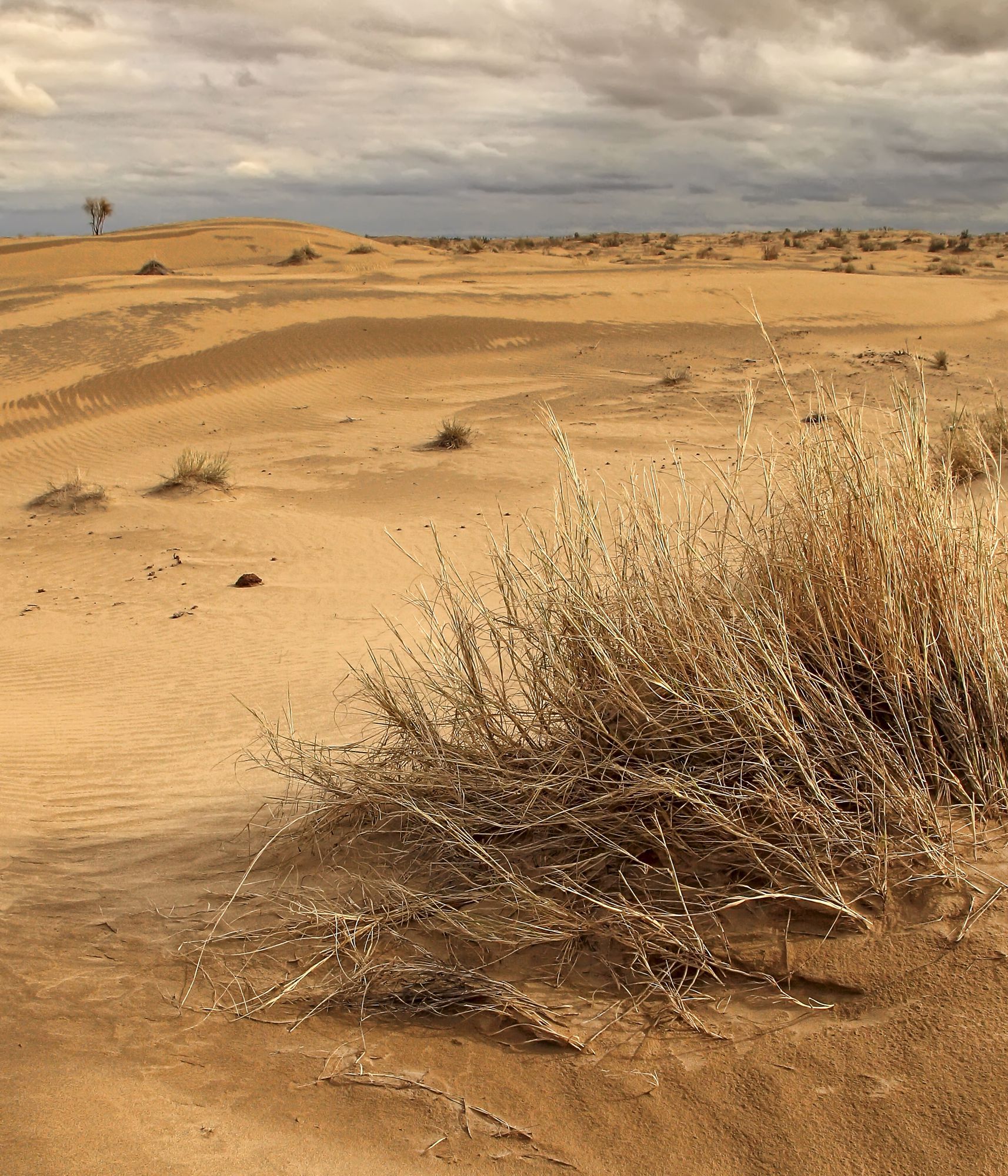
Karakum Desert
The Karakum desert is a sun-scorched expanse of dunes and sparse vegetation in the centre of Turkmenistan. Its name means Black Sand in Turkic languages, in reference to the dark soil that lies beneath the sandy surface of much of the desert. It’s Central Asia’s hottest desert that occupies about 70 percent of the area of Turkmenistan. You may explore it by taking transfer between Ashgabat and Dashaguz, passing through Darwaza.
Mud Crater
As with the Gates of Hell there are signs of the abundant natural gas around, with flames burning at the bottom of the hole, and bubbling mud in its corners. The perfectly round hole is a second tourist attraction in Darwaza.
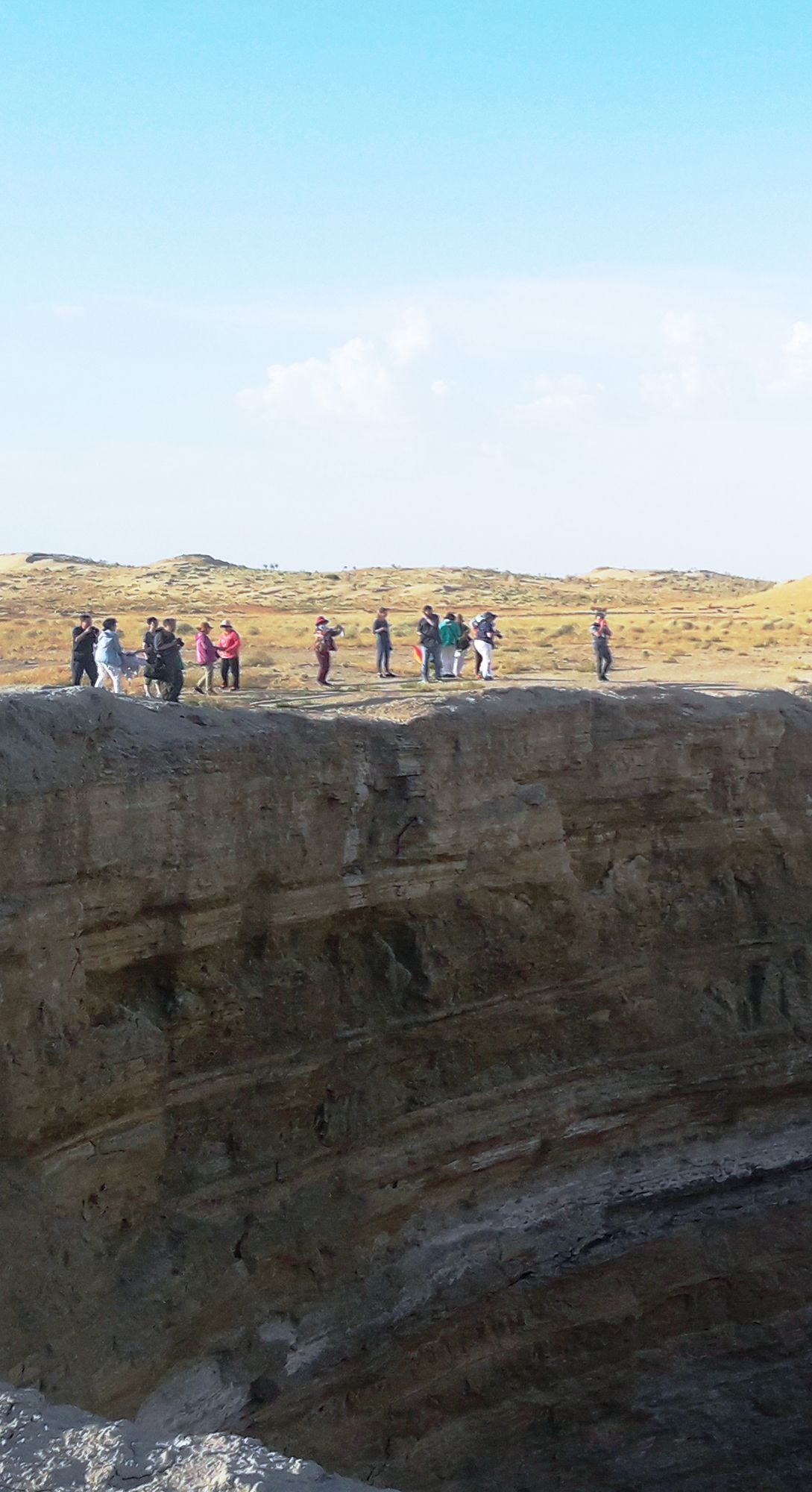
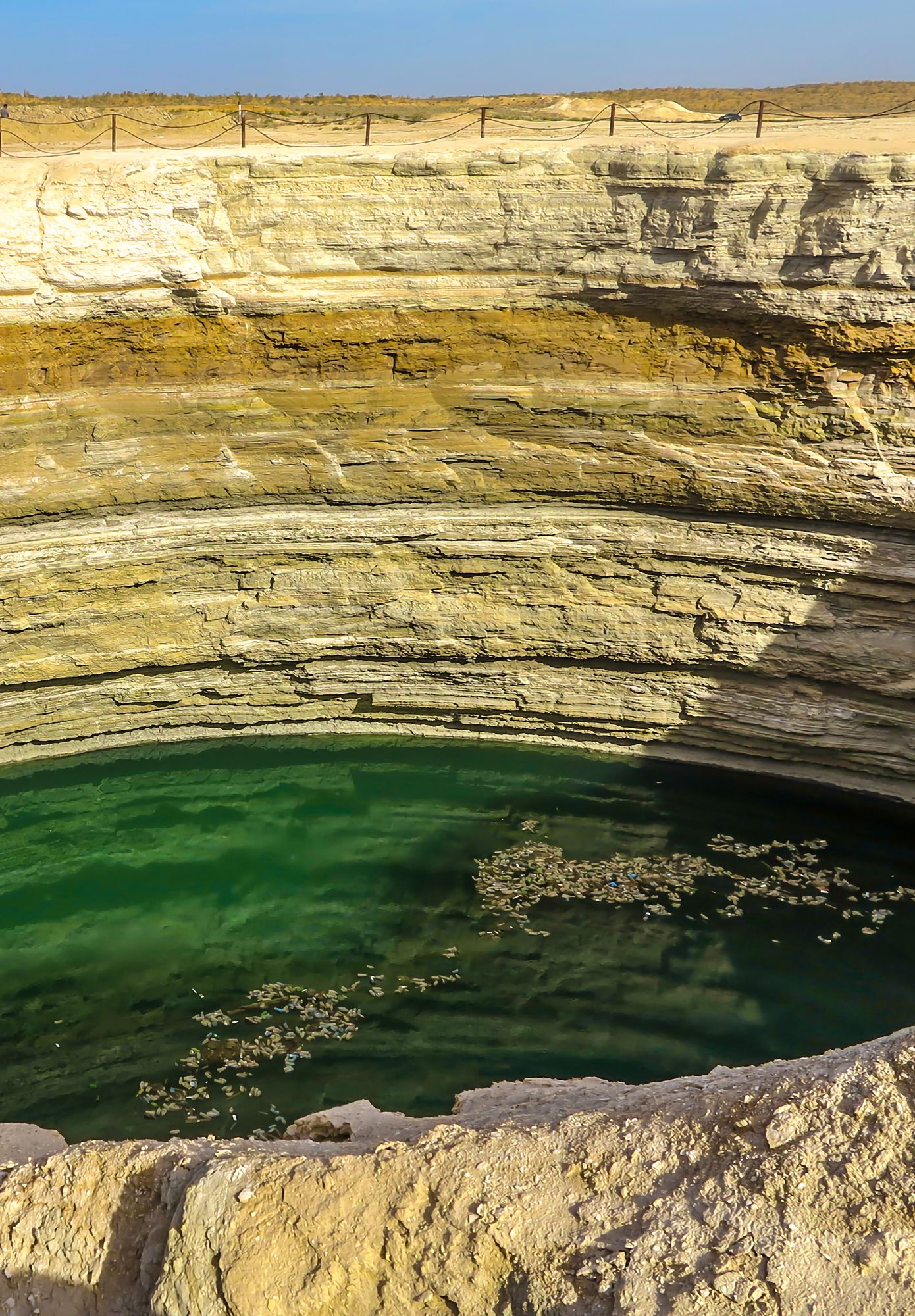
Water Crater
There is another, the third and less impressive, water crater nearby, a little smaller with no flames, just water. If the rubbish floating on the top was fished out it might possibly be worth a photograph, but in its current state it's not even worth stopping at.
Ancient Merv
Merv, also: Merw, Marv, later Alexandria and subsequently Antiochia in Margiana, was a major Iranian city in Central Asia, on the historical Silk Road, located near today’s Mary in Turkmenistan. Several cities have existed on this site, which is significant for the interchange of culture and politics at a site of major strategic value. Human settlements on the site of Merv existed from the 3rd millennium BC until the 18th century AD.
It changed hands repeatedly throughout its history. Under the Achaemenid Empire, it was the centre of the satrapy of Margiana. It was subsequently ruled by the Arabs, Turks and the Safavid Persians. During the 12th and 13th centuries it became one of the largest cities in the world, having a population of as many as 500,000. In 1221 the city opened its gates to an invading Mongol horde; the resulting destruction of the city proved devastating. Historical accounts contend that the entire population (including refugees) of a million people were killed. Though rebuilt after the Mongol destruction, the city never regained its full former prosperity. Between 1788 and 1789 the city was razed for the last time, and its population deported. By the 1800s the city was completely deserted.
UNESCO has listed the site of ancient Merv as a World Heritage Site.
Merv
In its heyday it was known as Marv-i-shahjahan, ‘Merv – Queen of the World’, and it stood alongside Damascus, Baghdad and Cairo as one of the great cities of the Islamic world. A major centre of religious study and a linchpin on the Silk Road, its importance to the commerce and sophistication of Central Asia cannot be underestimated. Today, however, almost nothing of the metropolis remains, and you’ll need to bring a fair chunk of imagination to get any sense of the place.
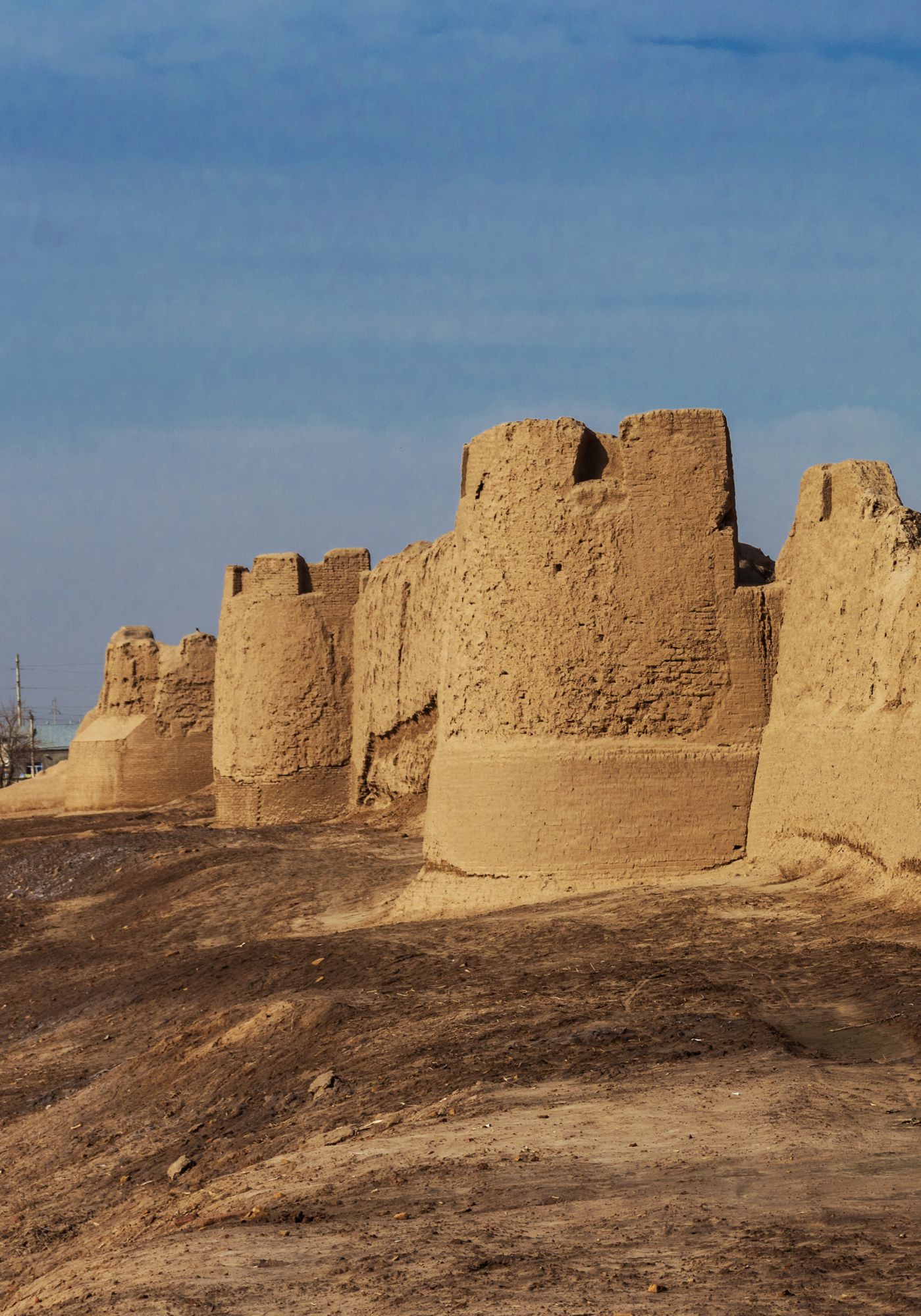

Great Kyz Kala
This crumbling 7th-century fortress outside the walls of Merv is interesting for its ‘petrified stockade’ walls. Constructed by the Sassanians in the 7th century, it was still in use by Seljuq sultans, 600 years later, as a function room. Great Kyz Kala, along with its pair, Little Kyz Kala, are some of the most symbolic and important structures in western Merv archaeology and they have no analogues anywhere else.
Buddhist Stupa
In the southeastern corner of Giaur Kala, a distinct mound marks the site of a Buddhist stupa and monastery, which was still functioning in the early Islamic era. The head of a Buddha statue was found here, making Merv the westernmost point to which Buddhism spread at its height. However, the stupa has been re-covered in earth to preserve it.
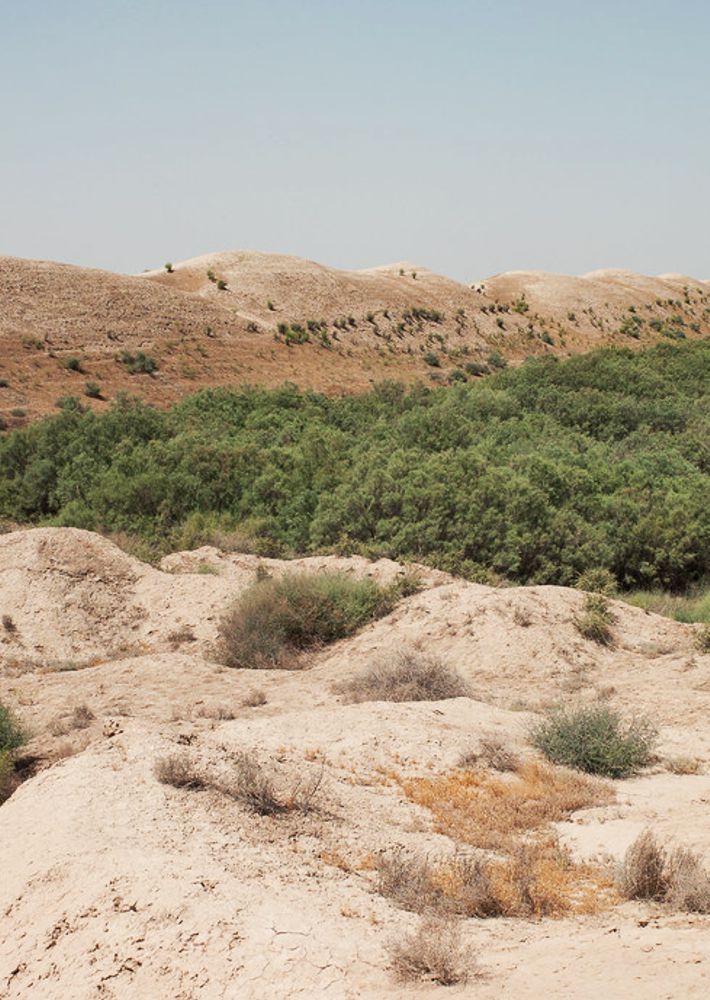
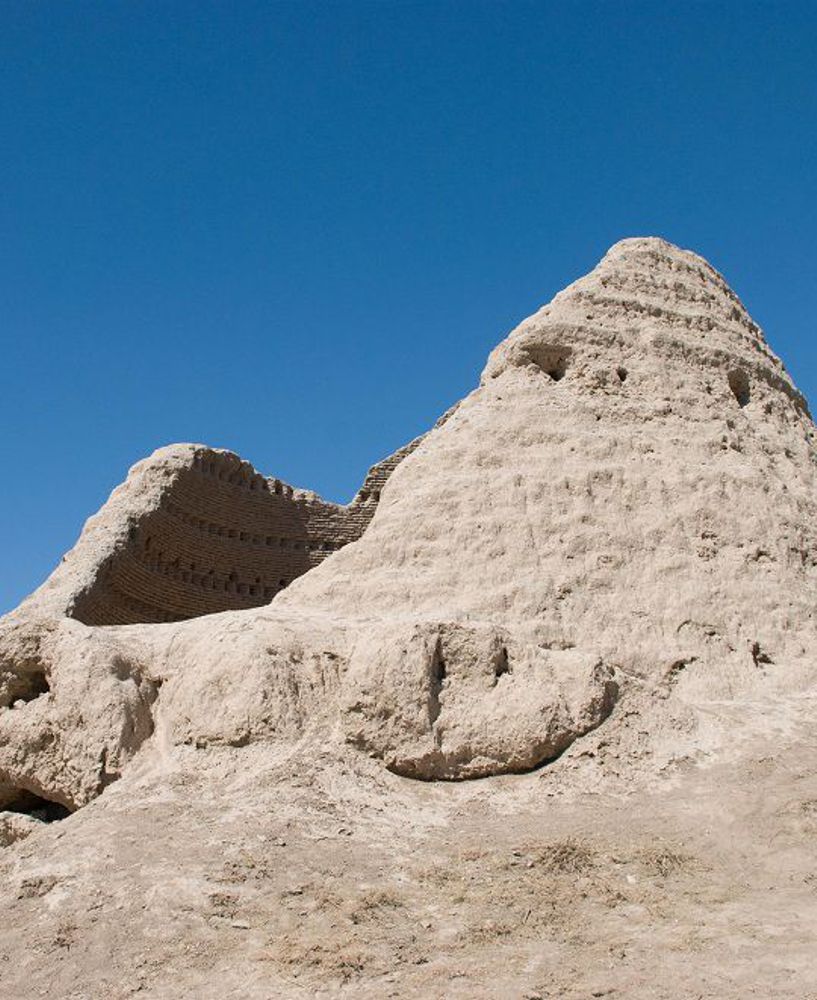
Ice House
The ice house structures are located south of Sultan Kala. These large, conically-domed earthen structures would have had sheets of ice built up on the ground level over the course of the winter to provide year-round ice supplies. There are remains of wood beams that stretched across the domes, probably used to hang meats for cold storage.
Sultan Sanjar
Mausoleum
The best remaining testimony to Seljuq power at Merv is the 38m-high Mausoleum of Sultan Sanjar, grandson of Alp-Arslan, who died in 1157, located in what was the centre of Sultan Kala. The building was restored with Turkish aid and rises dramatically in the open plain. The mausoleum is a simple cube with a barrel-mounted dome. Originally it had a magnificent turquoise-tiled outer dome, said to be visible from a day’s ride away, but that is long gone.

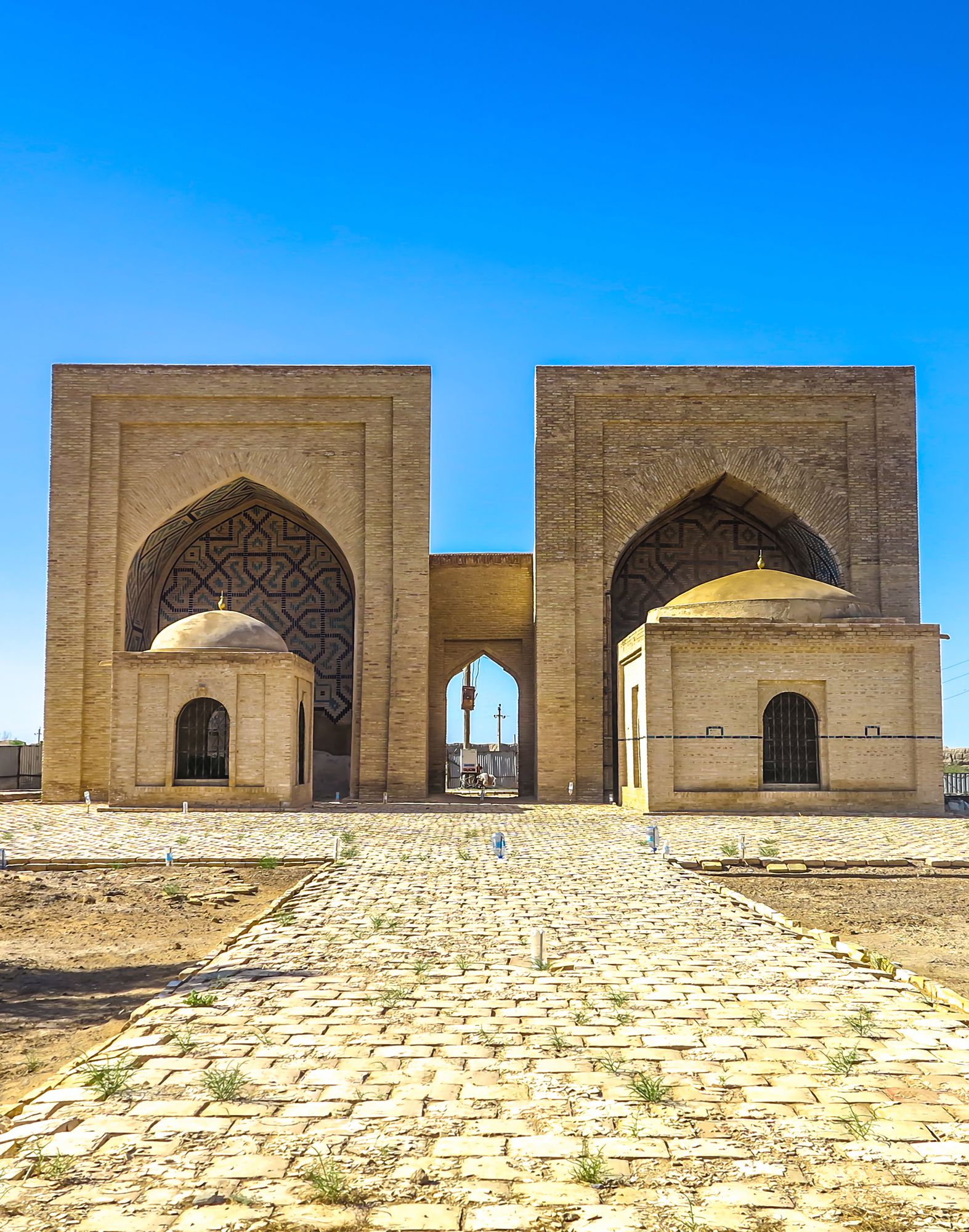
Mausoleum of
Two Askhabs
One of the most important pilgrimage sites in Turkmenistan are the mausoleums built for two Islamic askhab (companions of the Prophet), Al-Hakim ibn Amr al-Jafari and Buraida ibn al-Huseib al-Islami. The two squat buildings sit in front of reconstructed Timurid portals that honor the tombs of the two askhab. In front of the mausoleums is a still-functioning water cistern.
West Turkmenistan
Driving west from Ashgabat to the Caspean Sea area, the main road skirts the edges of the Kopet Dag and the Iranian border before opening up into a vast, featureless landscape that is wonderfully Central Asian. Highlights of the region include the magnificent Yangykala Canyon and Gozli Ata Mausoleum.
Driving further north and you will reach Turkmenbashi, Turkmenistan’s only major port and the end of the line for travelers heading on to the Caucasus via the ferry to Baku. There’s nothing much to keep you
here for any length of time, but it’s a pleasant and friendly town with a more Russian feel than most Turkmen cities and an enjoyable Caspian Sea location. The beaches near town are a bit rocky and not great for swimming, considering the proximity of the town oil refinery. There are better beaches at Awaza, 8km west of the city.
Yangykala Canyon
With bands of pink, red and yellow rock searing across the sides of steep canyon walls, Yangykala is a breathtaking sight and one of the most spectacular natural attractions in Turkmenistan. Canyons and cliffs slash for 25km towards the Garabogazköl basin and lie approximately 165km north of Balkanabat and about 160km east of Turkmenbashi, making it easy to slot in a trip to the canyon between the two cities.
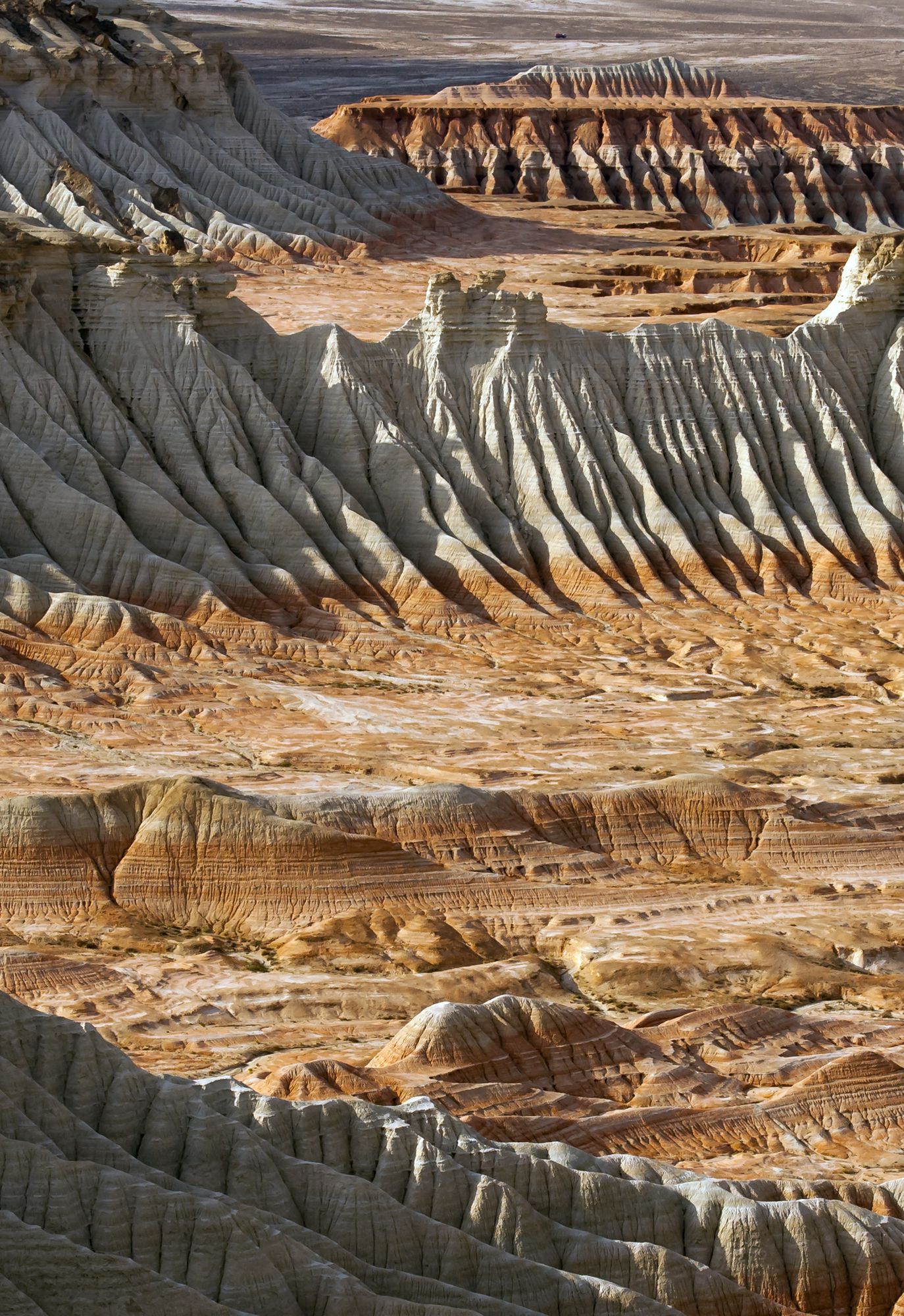
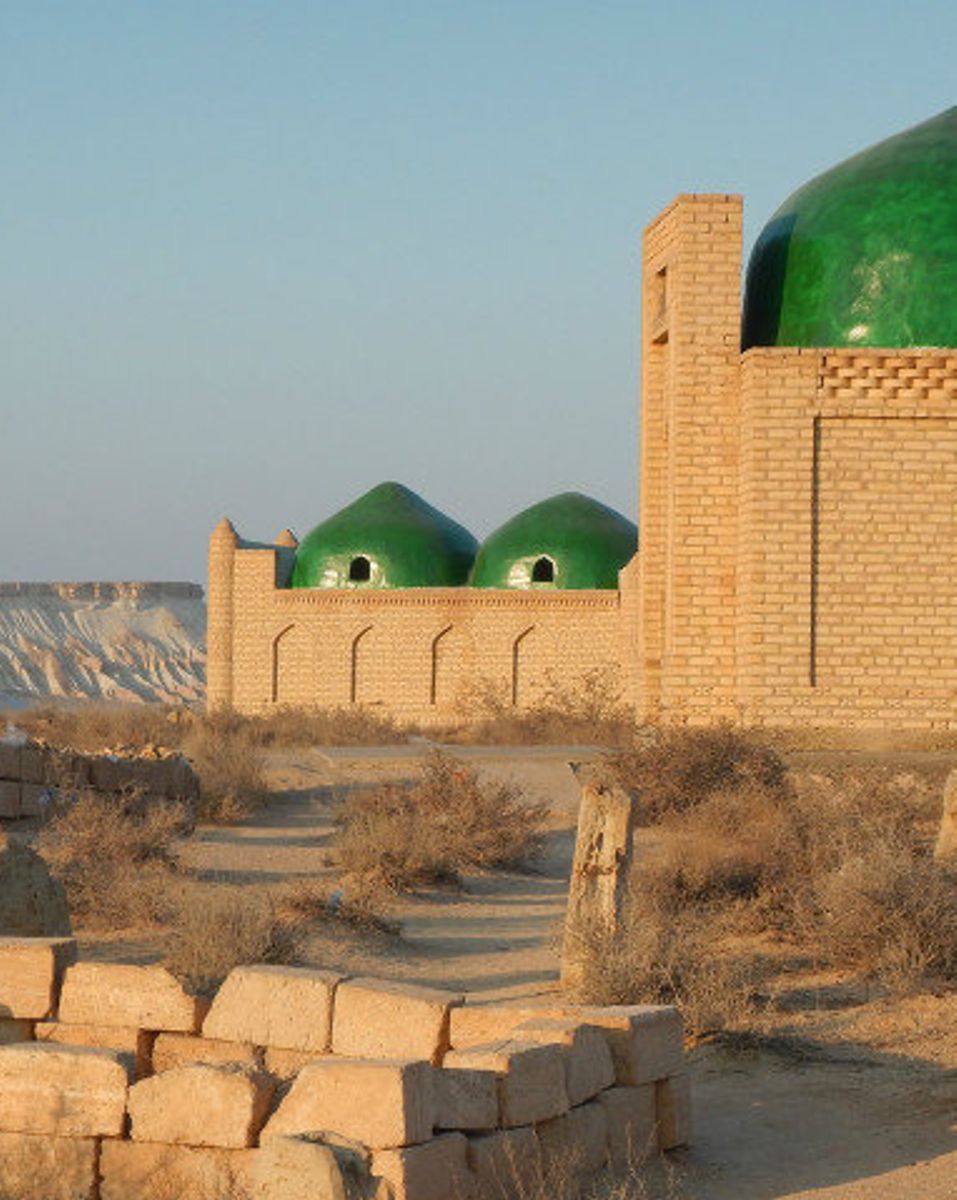
Gozli Ata Mausoleum
A respected Sufi teacher in the early 14th century, Gozli Ata had a large following until his untimely death at the hands of Mongol invaders. His mausoleum, located in a natural depression of rocky desert, is now a popular place of pilgrimage. Gozli Ata’s wife is buried in an adjacent mausoleum and, according to custom, visitors must first pray at her last resting place.
